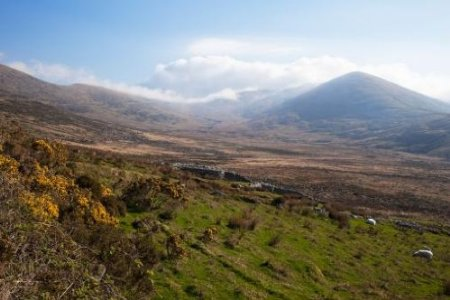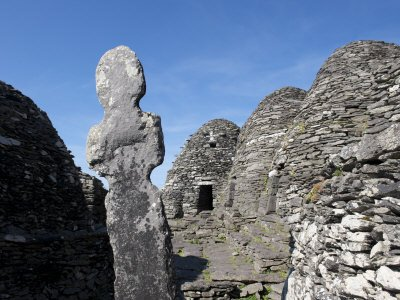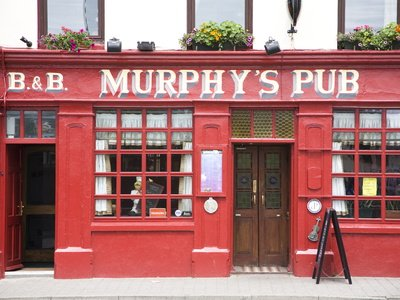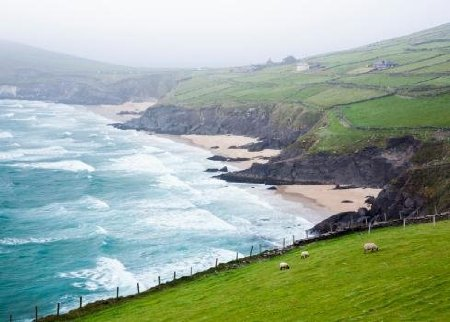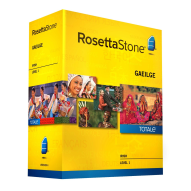Dingle Peninsula
During what is known as the Mesolithic Period, from 8000 to 4000 B.C., this was a temporary settlement for seasonal use. Excavations near Ballyferriter have revealed evidence of the first settlers, who were hunters and gatherers. They took advantage of the food sources along the coast, which were mostly from the sea, but also included deer, pigs, rabbits and birds. They made their tools from a variety of local stones. One of the most important finds were some cow bones dating about 5700 years ago, making them the earliest evidence of cattle in Ireland.
Southwestern Ireland has not been known for having Neolithic monuments or standing stones. There have been recent discoveries of Passage Tombs near Tralee and it is now believed that many of them may date to the Neolithic Period. During this period the first farmers appear, building more permanent structures than the earlier hunters and gatherers. Stone is used in tool and weapon making, along with stone tombs being built for burial and ritual use.
The Bronze Age, from 2500 B.C., was to become a time of great change in Ireland. In the southwest, where large deposits of copper were excavated, there was also evidence of the production of bronze. A new group of people from the south arrived at about this time, bringing with them new technologies. Some examples of the monuments associated with the Bronze Age are stone circles and stone alignments, orientated on the rising and setting sun, but it is hard to identify some of the dwellings inhabited by these people. However, the artifacts found certainly make up for this. There are hundreds of bronze tools and weapons, each one becoming more complex during this period. Ireland also has one of the largest collections of gold work in Europe, including collars, bracelets, earrings and gold boxes.
The Loch a'Dúin Valley near Cloghane contains the most remarkable series of structures from the Bronze Age. There are 90 stone structures dating from 2500 B.C. up to modern times, as well as several miles of stone walls. Archaeological studies have revealed that the valley was used for agriculture from 1600 B.C. to the beginning of the Iron Age. At this time, living quarters, dining halls, standing stones and animal enclosures were built. An even earlier wedge tomb and nine examples of circle rock art are found. Completely covering the landscape was a peat bog about 3000 years old. These ancient remains were uncovered due to the modern cutting of turf, which was used as fuel for heating and cooking. Peat preserves organic materials to a remarkable degree. A birch wood wall was found to be preserved perfectly. The bog also holds the pollen from the vegetation of several thousand years, enabling us to discover what grew in the valley.
During the Iron Age, 500 B.C. to 500 A.D., is when we associate the Celtic Period. One of the peninsula's most dramatic sites is located near the Village of Camp. Considered to be the gateway to the peninsula, here is found Cathair Con Rí, the finest promontory hill fort in the country. The Dingle Peninsula has the largest collection of Ogham stones in Ireland. Ogham, pronounced "o-am", is the earliest form of Irish writing. It is believed that the stones may have been used as landmarks or boundaries of land ownership. The stones carry the name of a male, his father and grandfather. The name of Duibhne is present on several stones. Duibhne was the Celtic Goddess associated with fertility and protection. The strongest evidence of Celtic presence is the Irish language, or Gaelic, which is still spoken here, in the Aran Islands, and a few other communities around the country.
Similar to the ancient pilgrimage to the summit of Mount Croagh Patrick, there is also a pilgrimage at Mount Brandon. This was a ritual on the last Sunday of July, as part of worship to the Celtic God Lughnasa and the harvest festival. After the conversion to Christianity, this pilgrimage was dedicated to St. Brendan, a 6th century monk, who is said to have had a vision of 'the land to the west' while standing on the summit, and is said to have sailed to America long before Columbus. There are over 30 early Christian monastic sites that were founded here, with a variety of remains such as cross slabs, holy wells, shrines, and sun dials. It was from these sites of education, from the 6th century on, that Irish monks traveled throughout Europe converting Christians to the monastic life. Produced during this period was the Book of Kells, which is the finest example of art from this era. The Celtic Church in Ireland during the 6th century is not under the direct rule of Rome so many of the early pre-Christian influences remained.
By the end of the 9th century, development on the peninsula was interrupted by the arrival of the fearsome Vikings. They vandalized many of the monasteries but also set up important trade routes and built towns. No Viking remains survive on the peninsula.
By the 12th century, the church was changed to a system under the rule of bishops who organized what are now known as the parish churches. The monastic sites were deserted, later being used as graveyards. During this period came the arrival of the Normans to Ireland. By the 13th century they built most of the Irish towns and reformed Irish society to the European system. Within a short period of time many changes occurred in Irish society, including tower houses and town walls. The Town of Dingle was founded by the Fitzgerald and Rice clans, who developed the town into the second largest port on the west coast, next to Galway. The Knights of Kerry, who were the Fitzgerald clan of Minard Castle, fought against Oliver Cromwell's army and his final stand in Ireland. Although Oliver Cromwell himself never came to the Dingle Peninsula, his army finally ended any Irish esistance in 1649-50. Four gunpowder charges were placed at the castle walls after the occupants had run out of ammunition. The castle was damaged in the blast and all of the occupants killed.
From the mid 17th century until the 1920's, the Dingle Peninsula was controlled by Lord Ventry. The period of Landlordism was a turbulent time on the Dingle Peninsula. One of the most tragic events to occur during this time was the Great Famine of 1845-48. During this period the potato crop failed, which was the main diet of most of the population. Poverty, disease and hunger led to the deaths of 5000 people in the Dingle Poorhouse alone, and they were buried in a pauper's graveyard.
Ireland was yet to win its independence but possibly the most defining moment in the formation of the Irish State was the 1916 Easter Rebellion. A War of Independence followed and was finally resolved in "The Treaty" which gave the Republic of Ireland 26 of its 32 counties. The remaining six counties, Northern Ireland, remained under the control of Britain.
Today there are several tours to and around the Dingle Peninsula. There are many activities in which to participate for novice to experienced trekkers. For the more adventurous, there is a five-day walking tour which covers the entire area on foot and includes many of the landmarks I have mentioned.
Click here for more detailed information and pictorial views of the Dingle Peninsula.
Disclaimer: LittleShamrocks.com is an affiliate website that receives commissions from sales of the products listed. We have purchased and sampled many, but not all, of the products on these pages.
© Copyright LittleShamrocks.com. All Rights Reserved.

